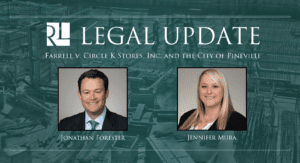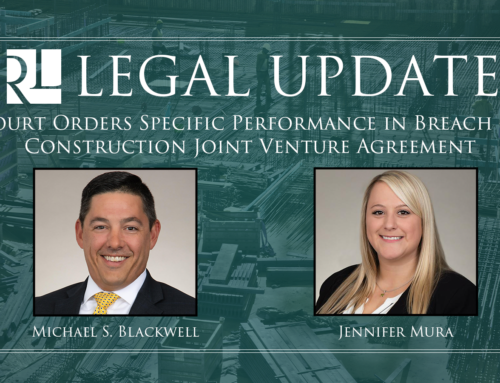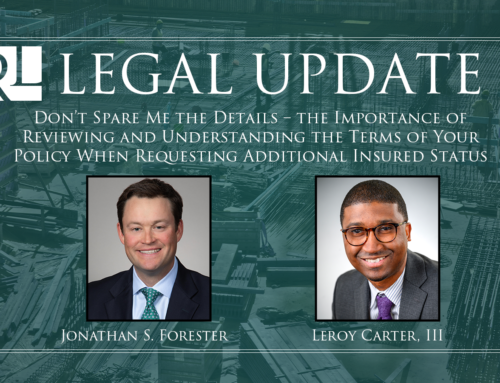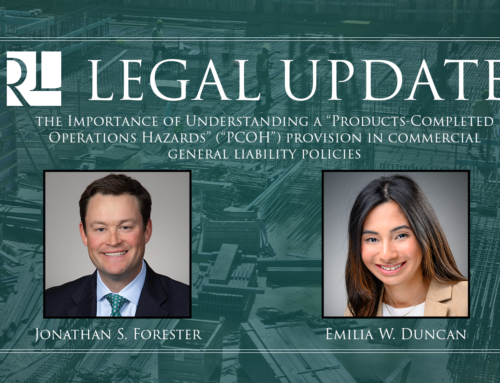 Farrell v. Circle K Stores, Inc. and the City of Pineville, 22-00849 (La. 3/17/23), ––– So.3d ––––, 2023 WL 2550503.
Farrell v. Circle K Stores, Inc. and the City of Pineville, 22-00849 (La. 3/17/23), ––– So.3d ––––, 2023 WL 2550503.
Authors: Jonathan Forester and Jennifer Mura
The Louisiana Supreme Court recently issued a decision in Farrell v. Circle K to clarify the “Open and Obvious” defense.
Farrell involves a slip and fall accident at a gas station in Pineville, Louisiana. While stopped at a Circle K gas station the plaintiff, Mrs. Farrell was walking her dog towards a grassy area next to the parking lot. To reach the grassy area, she attempted to step over the narrow part of a pool of water when she fell and sustained injuries.
Plaintiffs filed a lawsuit against Circle K and the City of Pineville (“Defendants”). Defendants filed a motion for summary judgment arguing the alleged hazardous condition or the pool of water was open and obvious. The trial court denied the motion stating issues of material fact exist, the court of appeals denied defendants’ writ application, and the Louisiana Supreme Court granted the writ application.
The Court acknowledged that the analysis of “open and obvious” has been inconsistent throughout the jurisprudence. In some courts “open and obvious” is discussed under the duty element of the duty/risk analysis and in others it is considered under the breach element.
The Court stated that the phrase “open and obvious” is a “figment of judicial imagination” and is notably absent from any premises liability statutes. The Court clarified that “open and obvious” is not a jurisprudential doctrine barring recovery. It is only a factor to be considered in determining if a breach of a duty occurred, not whether a legal duty exists. Specifically, it is a factor that falls within the risk/utility balancing test under the likelihood and the magnitude of the harm.
Whether a condition is open and obvious, therefore, is not a question of whether a duty is owed, but rather a question of whether a duty was breached. As noted by the Court, it would be incorrect to state that a defendant does not have a duty to protect against an open and obvious condition.
To determine if there has been a breach of a legal duty, courts are to apply the risk/utility balancing test consisting of four factors: (1) the utility of the complained-of condition; (2) the likelihood and magnitude of harm, including the obviousness and apparentness of the condition; (3) the cost of preventing the harm; and, (4) the nature of the plaintiff’s activities in terms of social utility or whether the activities were dangerous by nature. Broussard v. State ex rel. Office of State Buildings, 12-1238 (La. 4/5/13), 113 So.3d 175.
Further, the Court stated that although the balancing test provides clarity on the proper analysis, the basic premise of whether a hazard is considered open and obvious does not change. In order for a condition to be open and obvious it would be apparent to any reasonable person who may encounter it such that a reasonable person would avoid it. This would weigh in favor of finding that the pool of water is not unreasonably dangerous. The Court pointed out that the plaintiff’s personal knowledge and awareness of a condition does not determine whether that condition is unreasonably dangerous. Instead, the Court focuses on the reasonable person standard in analyzing the open and obvious nature of an alleged hazardous condition.
Under the facts of this case, the Court determined that the pool of water would be apparent to all who encountered it. Therefore, the likelihood and magnitude of the harm were minimal. The Court concluded that after applying the risk/utility balancing test, the pool of water, or the slippery substance in the water, did not constitute an unreasonably dangerous condition. The Court found that no reasonable juror could find that Defendants breached any duty and reversed the decision of the lower court, resulting in a grant of summary judgment in favor of Defendants, dismissing Plaintiffs’ claims.
The key take-away from this decision is that going forward, the “open and obvious” nature of a condition should only be considered in determining whether a breach of a duty occurred as a part of the risk/utility analysis and not whether a duty is owed. Additionally, although the determination of breach involves a mixed question of law and fact, summary judgment is not precluded in the appropriate case.



